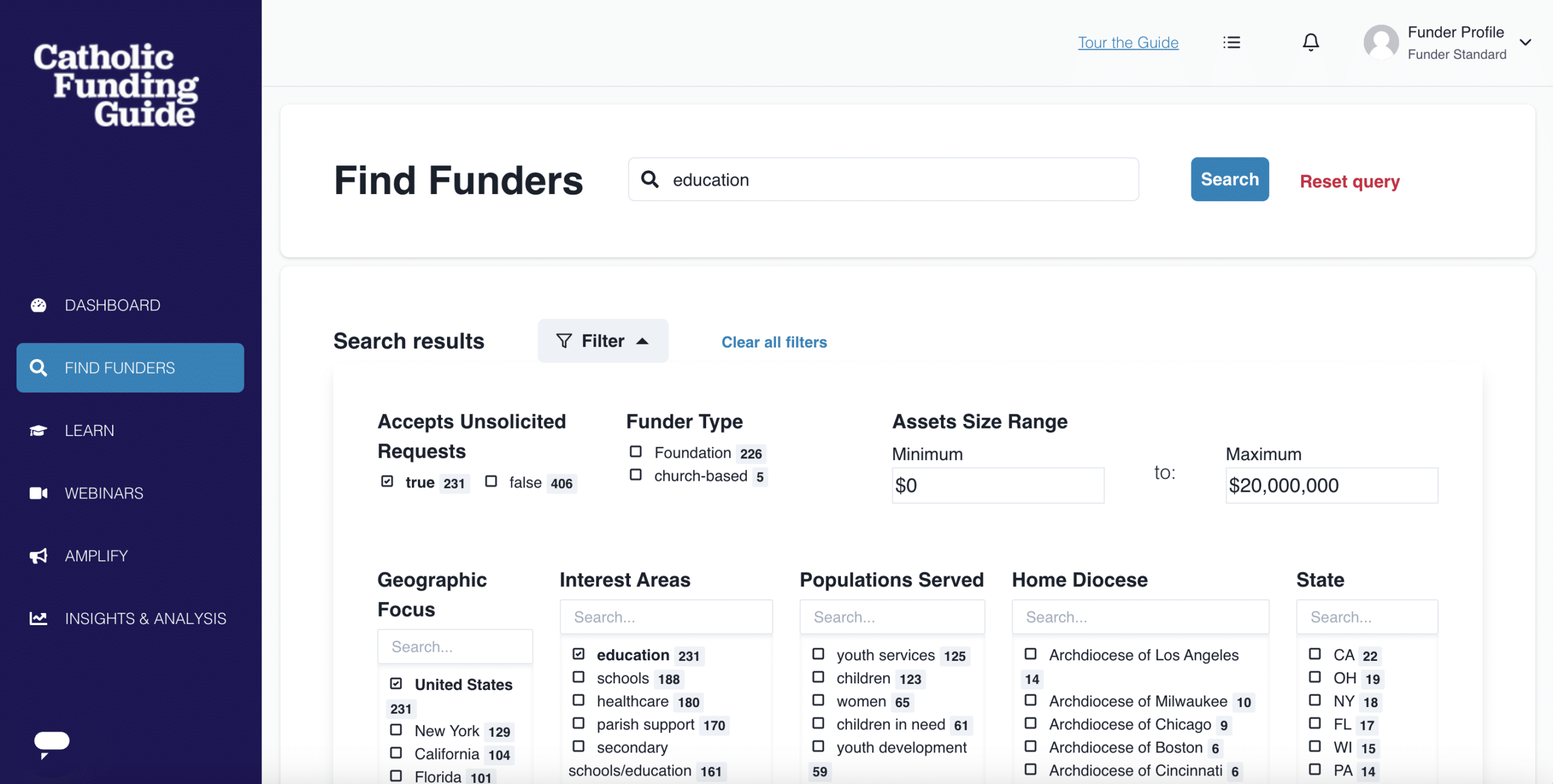Why is an End of Year Appeal Important?
The end of the year is a time when many people are feeling generous; they are, perhaps, more inclined to give during the holidays than at any other season.
They expect to see end of year appeals from organizations they care about. Your appeal will remind them to donate to your organization as they are inundated with other messages.
The close of the year and deadline for tax-deductible gifts can also incentivize donors to make philanthropic decisions that they might otherwise postpone.
Inviting donors to share in your mission at the end of the year offers generous people an easy way to give, while offering your organization a chance to receive vital funds. Because people already want to give and expect to give during the holidays, running an end of year appeal can be a large source of donations for your nonprofit.
“…running an end of year appeal can be a large source of donations for your nonprofit.”
Why Use Email in Your Year-End Appeal?
Leaving email out of your end of year strategy could be a serious misstep. By excluding email from the appeal, you are likely missing out on a great number of donors who would appreciate a quick and easy way to give.
Additional benefits of email include:
- No cost of postage
- Better ROI than traditional mailers due to lower cost
- Target those who are using their smartphones primarily (an ever-growing population)
Even if your organization has traditionally sent out letters and pamphlets by mail, consider adding email to the mix this year to expand your reach and increase donations.
Don’t Rely on Email Alone
Email is an important part of any year-end appeal strategy; but it is just that: one part. Reinforcing a message through multiple channels—mail, email, social media, texts, landing page on your website—is the best way to drive results.
Not only does a multiple-channel approach ensure consistency with messaging and branding, it will help get the message out to as many people as possible.
How to Create Your Email Appeal
Set Your Goal
To set yourself up for success, specify goals for the campaign. Start this ahead of time, preferably when creating your annual budget and fundraising plan.
The following questions can guide you in determining your goal:
- How much do you need?
- How much do you realistically expect to receive? (It never hurts to start with a lower goal and add to it if you gain more momentum than expected.)
- Will the money be used toward something specific that you can share with potential donors?
Create a Timeline and Utilize Holidays
Determine send dates for each email in your campaign. You can easily incorporate holidays into the plan. For example, send a gratitude-focused email on Thanksgiving, an ask on Giving Tuesday, a follow-up ask, a Christmas holiday email, and a final ask for year-end.
When determining how many emails to include in your campaign and how often to send them, consider how often your audience is used to hearing from you. While you have leeway to send more communications than usual during a campaign, it may be a turnoff if donors haven’t heard from you in a while and then start receiving daily emails about your year-end appeal.
Determine Email Workflow and Segmentation
You may want to send different versions of your campaign emails to different audiences. For example, messaging for major donors may not be the same as messaging for monthly donors who give smaller amounts. Once you determine how to segment your emails, you can plan out your workflow.
A workflow is the series of emails someone will continue to receive depending on how they respond to the first email. For example, once someone has given, they don’t need to receive more appeals, although their workflow would include emails such as campaign updates, holiday wishes, and thank you messages.
Incorporate Faith into the Appeal
As a Catholic nonprofit with potential donors who likely share your values, weaving a message of faith throughout your appeal is a way to resonate with and encourage your audience. Here are some simple ways to incorporate faith into the appeal:
- Liturgical Holidays. The liturgical seasons of Advent and Christmas coincide with the season of giving, so you can easily use those to theme some of your emails. For example, you could incorporate the color purple along with a psalm or Bible passage from one of the Sundays in Advent in your appeal.
- Giving to Grow in Faith. Giving during the holiday season is a beautiful response to the ultimate gift we received from God at Christmas. Share with your audience how giving can help cultivate their relationship with Jesus; how embracing a spirit of generosity can help prepare their hearts for this joyous celebration.
- Prayer. As you will invoke God’s guidance for your appeal and entrust the results to him, don’t forget to include potential donors in your prayers. One of your emails could simply express gratitude and assure them of your prayers.
- Mass. Offer a special Mass for donors and potential donors, inviting them to send in prayer requests.
Always Say Thank You
Donors who feel appreciated are more likely to give again. Include a thank you email in the workflow for those who donate online. You can also ask them to share the appeal with friends and family via email or social media. Include links so they can do so in one click.
In response to mail-in gifts, send a postcard, handwritten note, or letter. A handwritten message may be most appropriate for large donations. Include a handwritten signature for a personal connection (you can provide one digitally in your emails if you wish).
Tips for Successful Appeal Emails
You know you need emails that prompt the reader to give; but how can you maximize your success? Here are some best practices you can use as you craft your year-end appeal emails.
Compelling Content
Use the word “you” more than “we.” Your emails should focus more on the donors than your organization.
For example, instead of:
“At Community Food Bank, we feed hundreds of children each year,”
try:
“You can change the life of a child by providing the gift of food when you give to Community Food Bank.”
Language matters. Foster a sense of togetherness through the words of your emails.
Videos can significantly increase success. Even something as simple as a video featuring members of your staff or the people your organization helps can make a significant difference in donations.
Create urgency. You could send an email with a countdown to December 31, creating a limited window for giving; or use a bar graph to show how close you’ve come to your goal, providing a visual tool to help your audience picture how their gift will impact the total.
When donors feel like they are actually making a difference, rather than just sending dollars out into the ether, they feel valued and are more likely to give. Creating something tangible to help donors conceptualize the impact of their gift can motivate a favorable response to your appeal.
Incorporate matching gifts. Can you find a foundation or funder who will match donations for a limited time? Letting your audience know their gift can make an even greater impact will compel many of them to give. Phrases such as “Double your impact, this week only!” help create urgency and initiate action.
Tell stories. Use stories to make your emails emotionally compelling. Tell a story from the point of view of someone you help; or better yet, ask them to tell their story. You can also use statistics to demonstrate impact. (Keep in mind statistics and data work best when used sparingly to avoid flooding the reader with too much information.)
Provide multiple ways to give and multiple amounts. While you don’t want to overwhelm your potential donors with too many options, providing a handful to choose from can make it easier for them to make a decision. For example, you could include buttons labeled $25, $50, $100, and Other. You can include the option to give online or via snail mail. Depending on your audience, you could include a text-to-give option as well.
Intentional Design
Design plays an important role in capturing attention and encouraging recipients to donate. Although there is no “one-size-fits-all” design that works for every email, there are a few rules of thumb to keep in mind:
- Use consistent branding among all assets in your appeal campaign.
- Colorful and engaging design will make your appeal stand out.
- Make your appeal mobile-friendly. This can make a significant difference in donations. So many people read emails on their phones. If your email is not readable and responsive on a small screen, you may see an extremely low click-through rate. The email design must translate on a small screen (which also means the copy should not be too long).

Strategic Call to Action
The call to action is very important in your email. It should be clear and easy to find. In fact, it should be one of the first things a potential donor notices upon opening the email.
If your email is long enough to scroll (most are), include the call to action once “above the fold,” which means it should be visible before any scrolling when the email is opened. Include it at least once more below the fold.
Test for the Best
Once an email is sent, you don’t want to find out you missed an embarrassing typo, the video won’t play, or the “donate” button goes to a 404 page. Minimize the chance of errors by testing your emails prior to sending, leaving enough time to correct any mistakes you find.
Your email provider should enable you to send test emails. When you do:
- Test all buttons, videos, and links.
- Make sure any images and GIFs load quickly and render correctly.
- Proofread for typos in the subject line, preview text, body text, buttons, etc.
- Pay attention to how the subject line and preview text appear in an inbox. Sometimes only part of the subject line will appear, which leaves a possibility for an apparent typo.
- Open test emails in various browsers on mobile devices as well as desktop to see how they look and perform across platforms.
Once you gain new donors through your year-end appeal, your relationship has just begun. Cultivate great relationships with funders all year long to further your mission and theirs.



